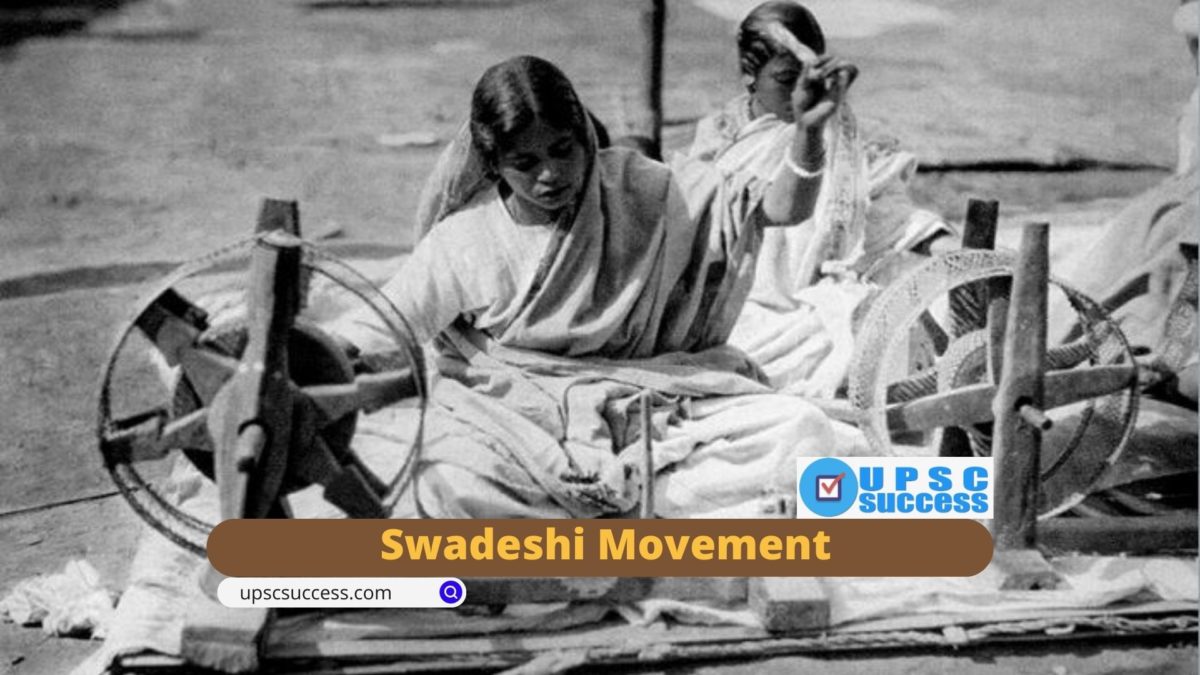Contents
The Swadeshi Movement was a pivotal chapter in the Indian freedom struggle that emerged as a result of the British colonization of India. It was a movement that aimed to boycott British goods and promote indigenous products to improve the country’s economic and political conditions. The movement played a significant role in the country’s independence, and its impact can still be felt in India’s economic policies and social structures today.
The Swadeshi Movement emerged in India in the early 1900s during the British Raj. India was under British rule for more than 200 years, and the British exploited the country’s resources for their own benefit, leaving India in poverty and despair. Indians were subjected to discriminatory laws, and their economy was destroyed as a result of British policies. In response to this, Indian nationalist leaders and activists began advocating for self-sufficiency and self-rule.
Early Phases of the Movement
The Swadeshi Movement began with the partition of Bengal in 1905, which was a political strategy employed by the British to weaken the growing Indian nationalist movement. This act of dividing Bengal, which had a significant impact on India’s social, cultural, and economic fabric, triggered the Swadeshi Movement. Indians were outraged and protested against the partition by boycotting British goods, burning British-made clothes, and promoting indigenous products.
Spread
The movement spread quickly throughout India, with mass protests, strikes, and demonstrations organized in many cities and towns. Women also played a significant role in the movement, participating in boycotts and organizing spinning and weaving campaigns to produce their own cloth.
Personalities associates
The Swadeshi movement in India was associated with several prominent personalities who played key roles in its development and spread. Some of these individuals include:
- Bal Gangadhar Tilak – A leading figure in the Indian independence movement, Tilak was a staunch supporter of Swadeshi and played a key role in mobilizing public support for the movement.
- Lala Lajpat Rai – A prominent Indian nationalist, Lajpat Rai was a vocal advocate of Swadeshi and led many protests and demonstrations in support of the movement.
- Mahatma Gandhi – Although Gandhi is often associated with the later Non-Cooperation movement, he was also a strong supporter of Swadeshi and encouraged the use of khadi, or Indian-made cloth, as a symbol of self-reliance and national pride.
- Rabindranath Tagore – A noted writer, poet, and philosopher, Tagore was a strong supporter of Swadeshi and promoted the revival of traditional Indian arts and crafts.
- Annie Besant – A British-born activist and theosophist, Besant was a vocal supporter of Indian nationalism and played an important role in organizing the Home Rule movement, which called for self-government for India within the British Empire.
These individuals, along with many others, helped to shape the Swadeshi movement and promote its ideals of self-sufficiency, national pride, and cultural revival.
Government response
The British colonial government in India responded to the Swadeshi movement with a combination of repression and reform.
On the one hand, the government used force to suppress protests and demonstrations, often resorting to violence and arrests to maintain order. This led to a number of clashes between protesters and police, and many activists were imprisoned or exiled for their involvement in the movement.
At the same time, however, the government also introduced a number of reforms aimed at placating nationalist sentiment and promoting economic development in India. For example, in 1909, the Morley-Minto reforms introduced limited political representation for Indians in the form of elected seats in the legislative councils. The government also established a number of institutions and programs aimed at promoting industrial and agricultural development in India, such as the Imperial Council of Agricultural Research and the Indian Institute of Science.
Despite these reforms, however, the Swadeshi movement continued to gain momentum, with many Indians rejecting the idea of limited representation within the colonial system and calling instead for complete independence. The movement played a significant role in shaping Indian nationalism and paved the way for the more radical Non-Cooperation and Quit India movements that would follow in the decades to come.
Impact of the Swadeshi Movement
One of the most important outcomes of the Swadeshi Movement was the growth of Indian industries and businesses. As part of the movement, Indians were encouraged to boycott British products and to buy locally made goods instead. This led to the establishment of a number of Indian industries, such as the textile industry, which had previously been dominated by British companies.

